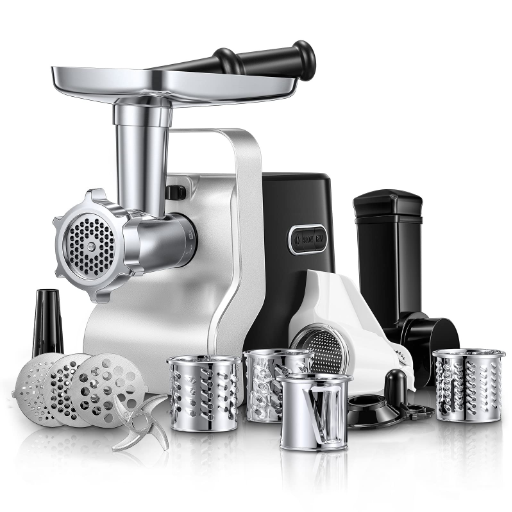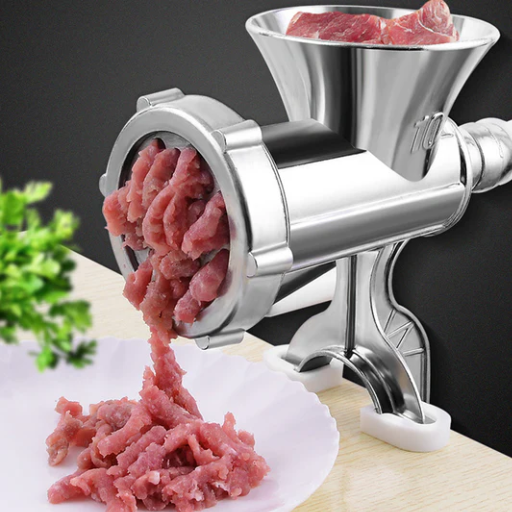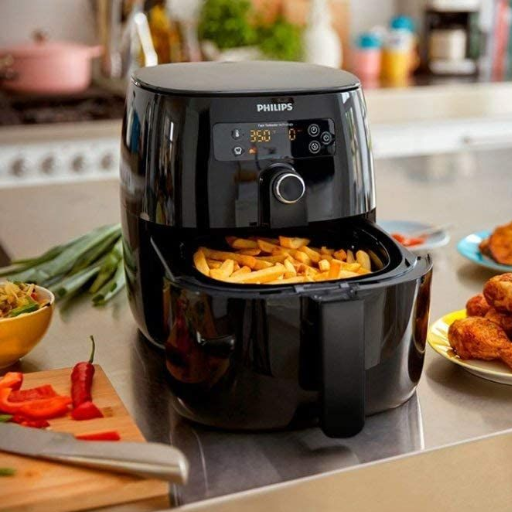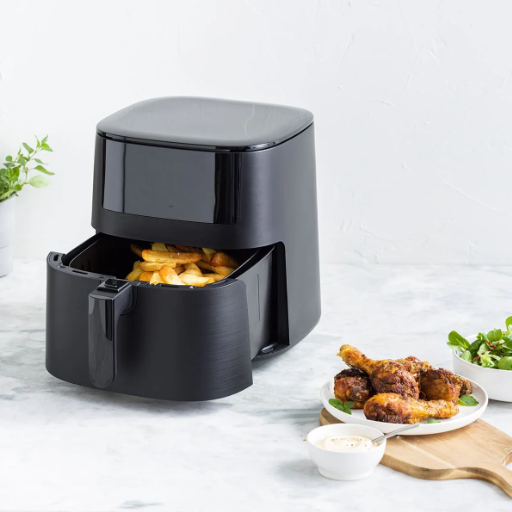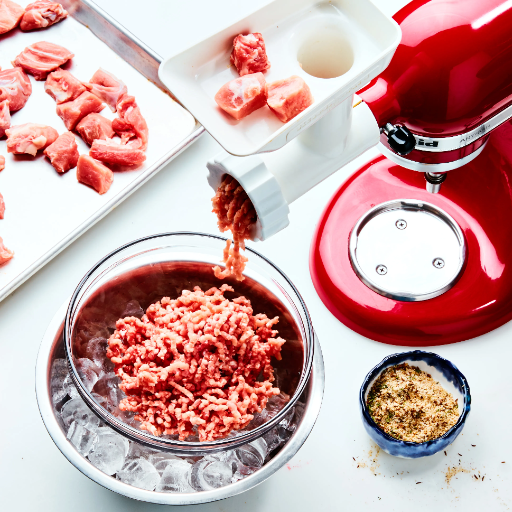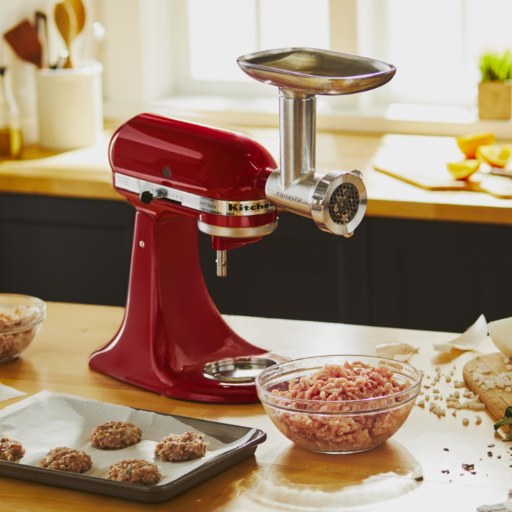If we talk about the most important tools of the kitchen, the stockpot of 21-quarts becomes number one by virtue of its adaptability and enormous capacity to carry out innumerable cooking assignments. If one wants to work on making flavorful consommés, boil a large quantity of pasta for a party, or even preserve summer produce long into winter, then the right pot is of utmost importance. We have created a guide to help you choose the perfect 21-quart pot that best suits your cooking habits. Various aspects will be covered, ranging from concerns about what materials and how heat conducts to the pot, down to the material construction, ability to resist wear and care, and cleaning. Any further information on the specific subject will enable you to make informed decisions about incorporating the mentioned device, which will undoubtedly become a staple appliance in your home kitchen for many years to come.
Understanding the 21-qt Pot
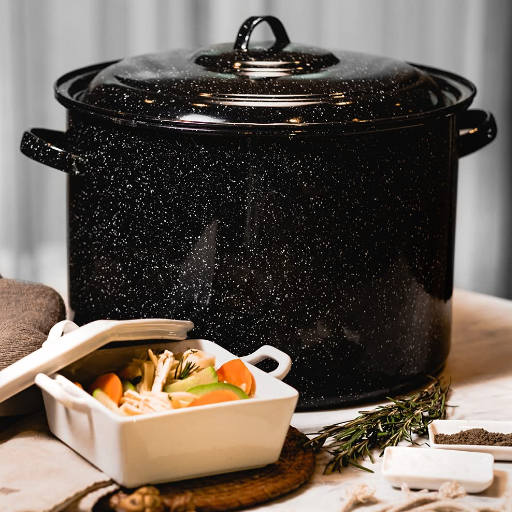
A 21-quart pot is designed for large-scale cooking, making it essential for recipes that require a substantial amount of preparation, such as soups, stocks, stews, or canning. These pots are usually made of stainless steel or aluminum, which are excellent materials because they are durable and heat conductive. Stainless steel would resist corrosion fairly well, whereas aluminum would conduct heat evenly, so that it would prevent hot spots.
When considering your 21-quart pot, ensure that it suits your stove, since some tri-ply or multi-layered-base pots can serve as sturdy options for induction cooktops. Also, pots with saf,e ergonomically designed handles and a snugly fitting lid further boost comfort and safety in cooking. Many of these pots are also etched with interior lining measurements for the accurate management of liquid quantities required in recipes. A 21-quart pot is defined by the ability to carry large servings easily and reliably.
What is a 21-qt Pot?
Cooking in a 21-quart pot is a process established in the annals of kitchen lore, designed for tasks requiring a substantial amount of volume, such as large-scale cooking like canning, boiling seafood, making broths, or even big social-cook events. Made from stainless steel and aluminum, these pots are designed for easy maintenance and even heat distribution, allowing you to cook a variety of dishes on their broad base with consistent heat. Most 21-quart pots of modern design are heat-source compatible. They can be equally operated on gas, electric, and induction stoves-anything to make life easier in a professional setting or home realm. Reinforced rims, strong handles to hold the weight of heavy food and liquids, are some of the key features mentioned. The dimension incorporates a diameter and depth proportioned to provide maximum capacity without compromising stability or efficiency, making them great for large-scale culinary needs.
Common Uses for a 21-qt Pot
- Canning and Preserving
A 21-quart pot is a must-have in the event that people are considering water bath canning or Pressure canning in jars, since it can accommodate a number of jars to be processed at the same time. A pot of this size can usually accept something around 7 quarts or 9 pints in such a batch, which would also be the case with jams, jellies, and any other sauces.
- Stock and Broth Preparation
Considering its large volume, this one is often used to make soups and broths as a key essential tool. In this regard, it is possible to add as many bones, meats, vegetables, and water as possible into one pot, as the vessel allows for that. A 21-quart pot can be emptied and filled with stock three times in three successive days and should be enough for either private use or selling of food in bulk.
- Cooking Soups and Stews
Great for preparing soups, stews, or chili, especially for large groups or food preparation purposes. Depending on the recipe, it can serve approximately 25–30 portions in one batch!
- Seafood or Crawfish Boils
This pot has enough capacity in cooking and mixing seafoods or crawfish with corn, potatoes, and seasonings. It ensures everything is cooked evenly and makes mixing easy, without worrying about spills.
- Pasta and Noodle Dishes
When we need to make a big portion of pasta or noodles, this is when a 21-quart pot comes into use. It is a wise choice when it comes to cooking people’s favorite food, pasta, especially in a party, given the amount of water it can contain for a few pounds of pasta at a time, which perfectly handles professional and in-event catering activities available in commercial kitchens.
Benefits of Using a 21-qt Pot
- Capacity for Large Batches
This 21-quart pot is ideal for preparing food in large quantities during a single cooking session. It will hold some 20 ears of corn or more than 120 oz. of soup or broth, hence catering or a large family. This implies less action, as there is no need to cook in batches, thereby reducing the time and effort required.
- Versatility in Applications
21-quart pots are useful for boiling, steaming, and slow cooking stocks due to their substantial size and strength. It can be used for preparing various dishes such as seafood boils, pasta dishes, chili or even events like home canning. Most standard cookware can be used for other purposes, but the 21-quart pot eliminates this need because it can be used for several cooking purposes.
- Efficient Heat Distribution
Because the majority of 21-quart pots are composed of recognized materials such as aluminium or stainless steel, there is adequate heat retention, which consequently results in even heat distribution during the cooking process. This, in turn, prevents the formation of hot spots, which are known to destroy food preparation, especially delicate sauces and sugar syrups.
- Durability and Longevity
A good-quality 21-quart pot is a useful tool for high-frequency use. It is normal that such a cooking utensil will be subjected to heavy cooking, hence it must be made strong and durable. Such items are resistant to corrosion and cracking that permanently ruin the pot, rendering it useless.
- Time and Energy Savings
Types of 21-qt Pots
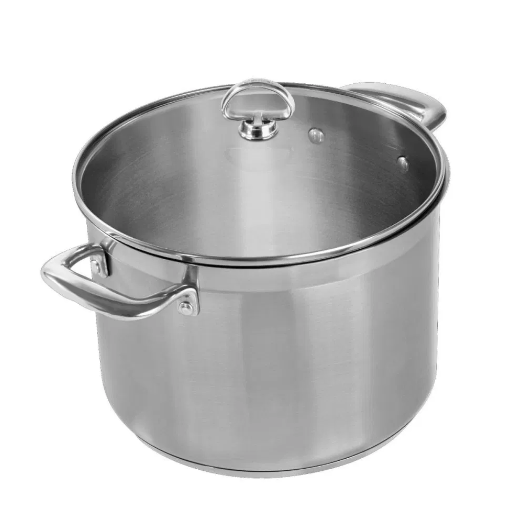
- Aluminum Pots
Lightweight and highly conductive, aluminum buttons ensure the fastest dispersion and empty conduction of heat. Ideal lowest bidders must be cared for to avoid staining and pitting.
- Stainless Steel Pots
Renowned for durability and resistance to corrosion, stainless steel pots are ideal in both household and commercial fields. With its encapsulated bases, they may offer additional effects on heat.
- Nonstick Pots
Nonstick pots are coated in such a way that makes them good to clean and prevents food from sticking to the surface. They really work well when cooking delicate recipes.
- Enameled Pots
Enameled pots unite an inner core, typically steel or cast iron, with a colorful, non-reactive enamel coating. They provide functionality, with beautiful aesthetics, and their interiors do not react with acidic ingredients.
- Multi-Ply Pots
Generally, these pots consist of bonded layers of metals like stainless steel coupled with aluminum or copper. Multi-ply construction increases heat conductivity and durability, making them gorgeous choices for professional applications.
Stainless Steel Stock Pots
Often termed “best partner in the kitchen,” stainless steel stock pots exist in homes and stellar kitchens because they are durable, multi-functional, and resistant to corrosion. These stock pots for stainless steel ensure somewhat even heat distribution, especially with tri-ply or multi-ply base construction, which incorporates aluminum and copper cores. Non-reactive pots are excellent choices when cooking acidic foods such as tomato-based soups or stews, with smooth surfaces that are easily polished and maintained; the ergonomic handles of modern stainless steel stock pots are designed to keep the hands comfortable and cool, as well as tight-fitting lids that keep moisture and flavor during the cooking process. From tiny ones weighing around four quarts to heavy-duty ones over 20 quarts, the larger end of the range is a good choice for measuring, varying from retaining heat in the broth to cooking a massive pasta batch. Offering induction cookware compatibility also makes it further applicable to modern kitchens.
Granite Ware Options
Granite-ware cookware is known for being tough and sturdy, a good heat conductor, and never too expensive- a package for every home cook’s kitchen and any professional restaurant! Granite Ware, made of carbon steel as a base and covered with porcelain enamel, is non-reactive and is great for baking, roasting, and simmering. The graniteware is lightweight yet sturdy, and they are easy to handle. Granite enamel is non-porous as well as stain-resistant and non-stick. In granite ware, popular options include roasting pans with even cooking and ridges or racks to lift foods, and stockpots for boiling or stewing, often with capacities ranging from 12 to 20 quarts. Granite-ware also takes good care of itself, as it resists scratching and rust when properly maintained, thereby extending the lifespan and cost-effectiveness of the product. Granite-ware agnostic, therefore including electric and gas stovetops-all perpetually keeping granite ware one of the worthy solutions to kitchen counterparts.W
Enamel on Steel Variants
Being an enamel-on-steel type of cookware is the modern version of traditional cookware, offering more strength and thermal properties. The pan is generally made of steel with a structural core and fast heat conduction properties, with the enamelling providing a smooth, non-porous surface that is resistant to stains and odors. Enamel-on-steel cookware, available in various colors, finishes, and designs, can seamlessly blend into either a professional kitchen or a home kitchen. This ingredient has demonstrated excellent resistance to higher cooking temperatures, making it suitable for roasting, baking, and broiling. Furthermore, many of the variants are made for induction cooktops to engage energy-efficient cooking technologies in a modern way. Their durability and aesthetics have made enamel on steel a popular choice for those seeking a good balance between function and style in their culinary instruments.
Choosing the Right Material
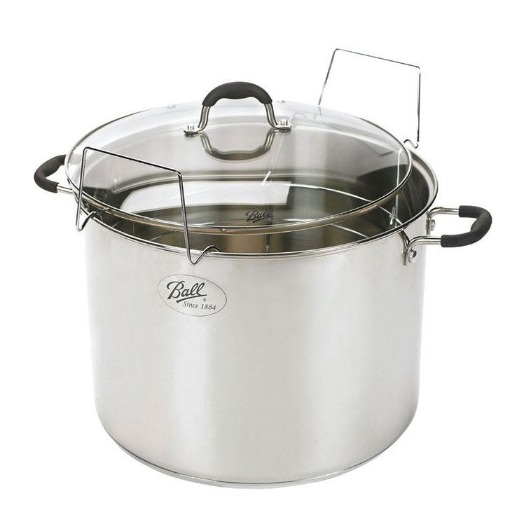
When making cookware material decisions, one must consider heat conductivity, durability, and maintenance requirements suitable for the cookery needs. Stainless steel is regarded as rust-free and durable, with aluminum offering heat distribution as one of its perks. However, on most occasions, it also requires bonding with non-stick surfaces to prevent food from sticking. Cast iron, being regarded as one of the best for heat retention, especially for slow cooking, should be regularly seasoned to avoid rusting. The non-stick options are an added advantage in cleaning, but must be carefully used to avoid scratching. Balancing these features against cost and personal preference would give you the best choice.
Durability and Heat Conductivity
You must understand the materials and processes used to create a pan for baking, which are essential for durability and heat conduction. Stainless steel is prized for its exceptional durability and corrosion resistance, and it can withstand high temperatures; hence, it is considered the best material for long-term use in everyday cooking. Low heat conduction does exist in stainless steel, so it is often laminated with an aluminum or copper core for good heat conduction. Aluminum is far better at conducting heat than steel, ensuring even cooking. However, its softness can sometimes make it prone to warping or scratching, except when anodized for a harder finish. Copper is one of the best conductors of heat, allowing for effective temperature control under the sun. However, it must be wiped and polished regularly to prevent tarnish. Detailed perspectives on how every material fares when constantly heated, exposed to acidic ingredients, and vigorously tested actually help one choose the best for specific culinary needs.
Chip-Resistant Features
Chip-resistant coatings are continually being developed for higher-end cookware to provide it with strength and maintain its appearance over time. Usually, such coatings are manufactured from a layer of high-quality enamel or a skinny layer of reinforced ceramic. They are designed to resist impacts and scratches from normal use, with improved bonding processes to the base material that gives these coatings a longer lifespan under wear conditions. Testing procedures include accelerated abrasion simulation and thermal shock tests, which consistently prove the structural stability of the coating. This is particularly beneficial if you want to maintain a professional appearance but need a coating tough enough to withstand the rigors of a commercial kitchen.
Even Heat Distribution in Cooking
Maintaining even heat distribution on cookware surfaces is among the essential requirements for achieving consistent cooking results. Being ever-improving under such advancements in material science, which started with good thermal conductivity, was, in modern times, enhanced by the insertion of material like aluminum cores, stainless steel cladding, and copper layers in cookware. Such materials enable rapid and uniform transfer of heat, thus rendering smaller sites of heat production known as hotspots, which may lead to uneven cooking or burning of food, described in a laboratory as controversial cases with multi-layer construction of cookware exhibiting a high rate of diffusion of thermal energy so as to maintain temperature steadily even in cases of high heat energy. Trusting such uniform capacity is the advantage in searing tender meat or simmering delicate sauces, where texture and flavor profoundly depend on exact temperature control. The constant exchange of ideas in engineering design is expected to enhance these parameters further, each time endowing LakeView with tools that promote maximum energy efficiency and cooking results.
Comparing 21-qt Pots with Similar Kitchen Tools
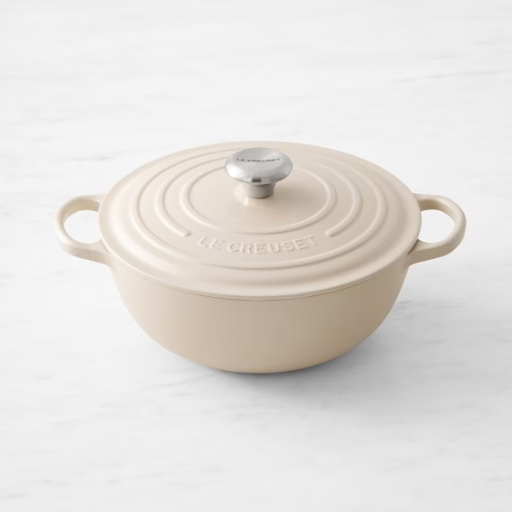
21-qt Pot vs. Other Stock Pots
|
Parameter |
21-qt Pot |
Other Stock Pots |
|---|---|---|
|
Capacity |
Large, up to 21 quarts |
Varies, often smaller sizes available |
|
Material |
Usually stainless steel or aluminum |
Diverse materials, including copper |
|
Heating Efficiency |
Slower to heat due to size |
Heats faster with smaller volumes |
|
Cooking Applications |
Ideal for broths, canning, large meals |
Great for smaller, quick recipes |
|
Portability |
Heavy and less portable |
Lightweight and easy to move |
|
Versatility |
Limited flexibility in smaller-scale use |
Suitable for versatile cooking tasks |
|
Durability |
Highly durable, long lifespan |
Depends on material and brand |
|
Energy Usage |
Higher energy consumption |
Lower energy consumption |
|
Price Range |
Moderate to high, based on material |
Typically lower for smaller pots |
|
Maintenance |
Easy to clean, dishwasher safe |
Often easy to clean |
Versatility Compared to Smaller Pots
Bigger pots show a lot of versatility; they are highly suitable for dishes that require large quantities or batch cooking. They can prepare stews, soups, and full-course meals all in one pot while feeding a large group or meal prepping. In contrast, smaller pots are better when dealing with recipes that require more precision, like sauces, reductions, or smaller portions, which is exactly what a household mostly does on a daily basis. A kitchen setup with a large pot can hinder operations, while small pots are less space-demanding and more convenient in smaller kitchens. They work in different ways, so their application depends on the cooking requirements and the kitchen setup availability.
Best Practices for Using a Large Stock Pot
- Choose the Right Size
When using a large stockpot, take care to ensure the size fits your cooking requirements and avoid overcrowding with ingredients. A good stockpot should have enough room for ingredients while ensuring that liquids flow freely; it’s about good heat distribution.
- Preheat Gradually
When heating a large pot, it should be slowly preheated over medium heat to allow the pot to expand evenly; otherwise, sudden high heat will cause a disagreeable temperature that, over time, can compromise its structure.
- Monitor Liquid Levels
- Utilize Proper Utensils
Maintenance and Care Tips
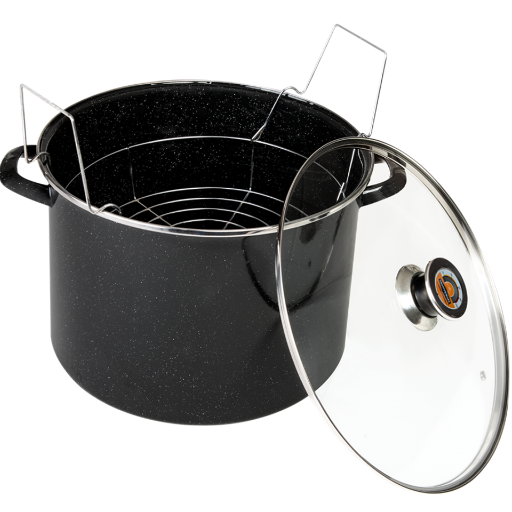
- Cleaning the Pot
Always clean the pot immediately after using it to prevent residue from hardening. Wash it in warm, soapy water using a non-abrasive sponge to protect the pot’s finish. If the material has dried into the pot, soak it in water for some time before cleaning.
- Inspect for Damage
Inspect the pot regularly for any wear and tear. This includes cracks, warping, or loose handles. Should you observe any such occurrence, replace the worn part for a healthy and safe operation.
- Proper Storage
Store the pot in a dry location to prevent rusting or corrosion. If pots are being stacked, put some padding in between them to avoid scratches or dents.
- Maintaining Surface Integrity
Use any metal utensils on non-stick or coated surfaces at your own risk of destroying their finish. Additionally, follow the vendor’s maintenance instructions.
Cleaning Your 21-qt Pot
Following the cleaning procedure as described is important for the long life and optimal performance of your 21-quart pot. Allow it to cool after use before washing, as immersing a hot pot in cold water can cause the material to warp or become stressed. Use an abundance of warm, soapy water to wash and a sponge or soft cloth to scrub off the residue without damaging the finish. For really stubborn stains or burnt-on food, apply a paste made of baking soda and water —the best kind of scrub, gentle and non-toxic. Avoid all harsh chemical cleaners and steel-wool pads that can scratch or corrode the surface. Follow the manufacturer’s cleaning instructions for the pot just to be on the safe side. Never put it in the dishwasher unless you are absolutely sure it is dishwasher safe. Always dry it with a clean towel after giving it a thorough wash to eliminate water spots, if one cares about water spots, that is, or even worse, rust formation on stainless steel or any metal alloy pot.
Storage Recommendations
Long-Term Care for Durability
To ensure the long-term care of your cookware, consider a maintenance routine in addition to regular use. After each use, always thoroughly wash your pots to prevent residues from building up over time, which can degrade the material. Stainless steel pots can also be polished with a non-abrasive cream to maintain their natural shine and prevent corrosion. Cast iron requires constant seasoning with a very light covering of oil to protect the iron surface from rusting, whilst making it slightly more non-stick.
Reference Sources
-
Cookware as a Source of Toxic Metals: This study highlights the health risks associated with toxic metal leaching from cookware, particularly lead, cadmium, and aluminum. Factors like acidity, cooking duration, and temperature significantly influence metal migration into food. Stainless steel and cast iron are recommended as safer alternatives to reduce exposure.
-
Investigating Aluminum Cookpots as a Source of Lead Exposure: This study examined aluminum cookpots used by Afghan refugee families in the U.S. and found high levels of lead contamination, with some pots leaching lead far beyond safe limits. Stainless steel was identified as a safer alternative.
Frequently Asked Questions (FAQs)
Q: What is a 21 qt pot used for?
A: A 21 qt pot is ideal for large batch cooking, making it perfect for soups, stews, and chili. Its spacious capacity can accommodate family gatherings or meal prepping for the week. Many people use it for canning vegetables and fruits, as it can hold multiple jars simultaneously. Additionally, it’s great for boiling pasta or preparing large quantities of stock, ensuring you have enough for various recipes. The versatility of a 21 qt pot makes it a valuable addition to any kitchen, whether you’re a home cook or a professional chef.
Q: Can a 21 qt pot be used on an induction stove?
A: Yes, a 21 qt pot can be used on an induction stove, but it’s essential to ensure that the pot is made from ferrous materials. Induction stoves require cookware that can respond to magnetic fields, so check for a label indicating it’s induction-compatible. Stainless steel and cast iron pots generally work well on induction surfaces. If you’re considering a 21 qt pot for your induction cooktop, look for options specifically designed for this purpose to ensure efficient cooking. Using the right pot can enhance your cooking experience and improve energy efficiency.
Q: What materials are best for a 21 qt pot?
A: The best materials for a 21 qt pot include stainless steel, aluminum, and cast iron. Stainless steel is durable and resistant to rust and corrosion, making it easy to maintain. Aluminum pots are lightweight and conduct heat well but may require a non-stick coating for easy food release. Cast iron pots, while heavier, retain heat exceptionally well and are perfect for slow cooking. When choosing a material, consider how you plan to use the pot and whether you need features like non-stick surfaces or compatibility with induction cooktops. Each material has its benefits, so select one that fits your cooking style.
Q: How to clean and maintain a 21 qt pot?
A: Cleaning and maintaining a 21 qt pot depends on the material it’s made from. For stainless steel pots, it’s best to avoid harsh abrasives and use warm soapy water for routine cleaning. For cast iron pots, seasoning is crucial, so after washing, dry it thoroughly and apply a thin layer of oil to prevent rust. Aluminum pots may require specific cleaners to avoid discoloration. Always refer to the manufacturer’s instructions for the best cleaning practices. Regular maintenance ensures the longevity of your 21 qt pot, allowing you to enjoy its benefits for years to come.
Q: Is a 21 qt pot suitable for outdoor cooking?
A: A 21 qt pot is indeed suitable for outdoor cooking, especially for activities like camping or backyard gatherings. Its large capacity is perfect for preparing meals for a crowd, such as stews or boiled seafood. When using it outdoors, ensure that you have a stable and safe heat source, be it a camp stove or an outdoor burner. Additionally, consider the pot’s weight and ease of transport. Many outdoor enthusiasts appreciate the versatility of a 21 qt pot for various cooking methods, making it a great addition to your outdoor cooking gear.

